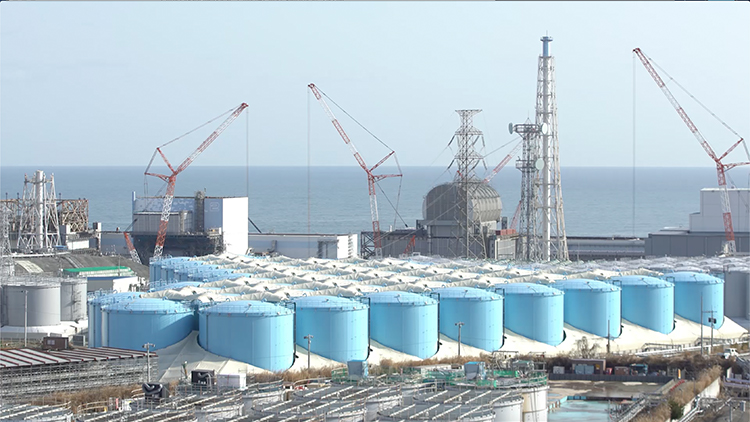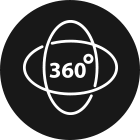Dose levels in the vicinity
μSv/h
What is stored in these tanks?
These tanks contain ALPS treated water, etc. that has been treated with multi-nuclide removal equipment (ALPS), etc. and Sr removed water.
Note on “Water treated with multi-nuclide removal equipment, etc. (ALPS treated water)” is notated.
"ALPS treated water" refers to water that has been purified with multi-nuclide removal equipment (ALPS), etc. until the concentrations of radioactive substances, excluding tritium, meet the government’s regulatory standards (The sum of the ratio of legally required concentrations, excluding tritium, being less than 1).
Water that has been purified with multi-nuclide removal equipment (ALPS), etc., but has yet to fulfill the government’s regulatory standards (The sum of the ratio of legally required concentrations, excluding tritium, being 1 or higher) is referred to as, "treated water to be re-purified".
What is the capacity of each tank?
There are many types of tanks. A standard tank can hold approximately 1,000m3of water.
How many tanks are there on-site?
As of January 2024, there are more than 1,000 tanks on site in with the capacity of approximately 1.37 million m³ of water such as ALPS treated water.
See the Treated Water Portal Site for more details.
Note on “Water treated with multi-nuclide removal equipment, etc. (ALPS treated water)” is notated.
"ALPS treated water" refers to water that has been purified with multi-nuclide removal equipment (ALPS), etc. until the concentrations of radioactive substances, excluding tritium, meet the government’s regulatory standards (The sum of the ratio of legally required concentrations, excluding tritium, being less than 1).
Water that has been purified with multi-nuclide removal equipment (ALPS), etc., but has yet to fulfill the government’s regulatory standards (The sum of the ratio of legally required concentrations, excluding tritium, being 1 or higher) is referred to as, "treated water to be re-purified".
When referring to both of the aforementioned types of treated water collectively, "ALPS treated water, etc." is used.
What are the tents around the bottoms of the tanks?
These tents have been set up to prevent rainwater from entering leak prevention dikes.
In the slight chance that a tank did leak, this would enable us to accurately measure and analyze the amount of water
that leaked.
What is the difference between white, gray and blue colored tanks?
The various tank manufacturers use different colors. There is no difference in performance.
Will the water be stored in tanks forever?
Since August 24, 2023, we have commenced the discharge of ALPS treated water into the sea. This water was stored in tanks, and confirmed prior the discharge that the concentrations of radioactive substances, excluding tritium, meet the government’s regulatory standards after the purification by multi-nuclide removal equipment (ALPS), etc.
Therefore, the amount of water being stored in these tanks will gradually decrease over time.
Note on “Water treated with multi-nuclide removal equipment, etc. (ALPS treated water)” is notated.
"ALPS treated water" refers to water that has been purified with multi-nuclide removal equipment (ALPS), etc. until the concentrations of radioactive substances, excluding tritium, meet the government’s regulatory standards (The sum of the ratio of legally required concentrations, excluding tritium, being less than 1).
Water that has been purified with multi-nuclide removal equipment (ALPS), etc., but has yet to fulfill the government’s regulatory standards (The sum of the ratio of legally required concentrations, excluding tritium, being 1 or higher) is referred to as, "treated water to be re-purified". When referring to both of the aforementioned types of treated water collectively, "ALPS treated water, etc." is used.








